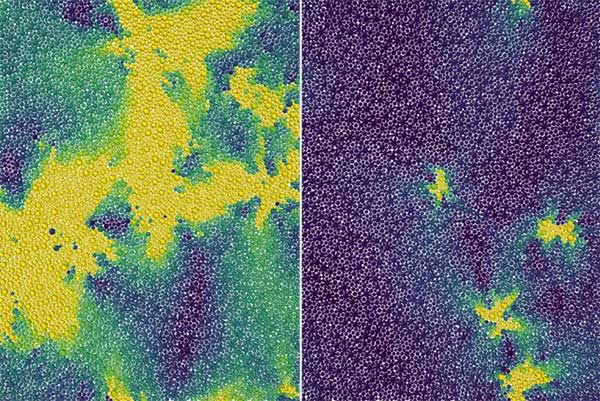The familiar theory that “matter has three basic states: solid, liquid, gas” may have just been challenged by a shocking discovery from a research team at the University of California, Berkeley (UC Berkeley, USA).
Three scientists, Dimitrios Fraggedakis, Muhammad Hasyim, and Kranthi Mandadapu from UC Berkeley, discovered that some materials previously thought to be solid exhibit very strange “behavior”: the static particles within them continuously “jitter” and move in place, rather than being completely still as the basic definition of solids suggests.
This has led them to propose what could be a fourth state of matter on Earth, as detailed in their recently published scientific paper in the journal Proceedings of the National Academy of Sciences.

The yellow region shows more mobile molecules compared to the blue region in two images depicting relatively “soft” and fairly “hard” states, as temperature changes slightly – (Photo: Kranthi Mandadapu)
The authors have tentatively named this previously unknown state of matter “amorphous solid.” It represents a peculiar mixture of well-ordered solids and loosely bonded liquids.
This form of matter appears solid to the naked eye, but internally, it has a chaotic arrangement typical of liquids. The particles within this material are bonded together but rather loosely, allowing them to still move. If the bonds were stronger, they would become a solid; if the bonds weaken, they would turn into a liquid.
One of the forms that “amorphous solid” can take is glass. The components of oxygen and silicon melt when heated. If cooled slowly, the particles within the material form a well-ordered crystalline structure known as quartz.
However, if cooled rapidly, the particles inside the glass retain their disordered arrangement, and at a certain temperature, it becomes an amorphous solid, according to simulations from the UC Berkeley research team.
According to Science Alert, the research team believes that their model could be extended to understand how the transition between different states of matter occurs and provide a theoretical foundation for new material technologies.





















































